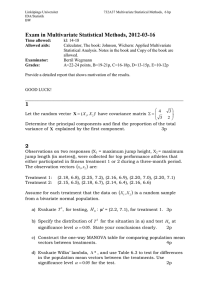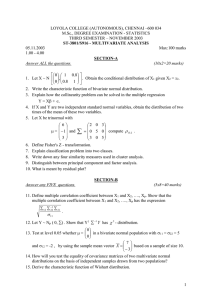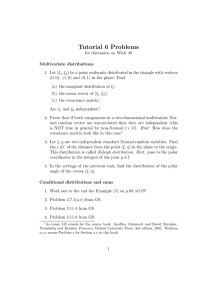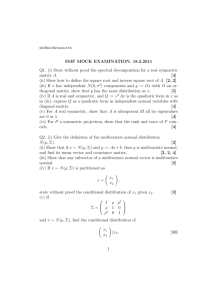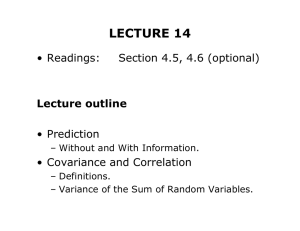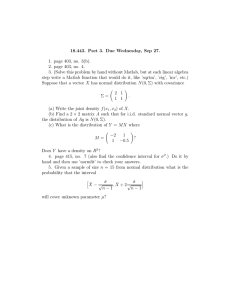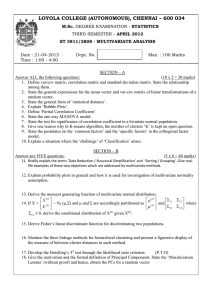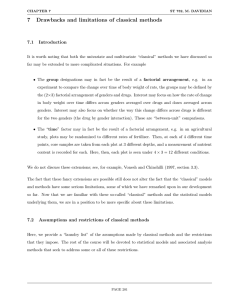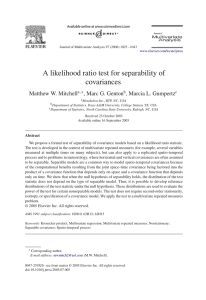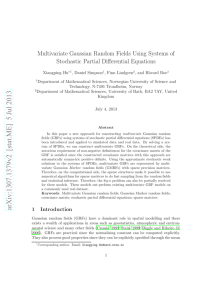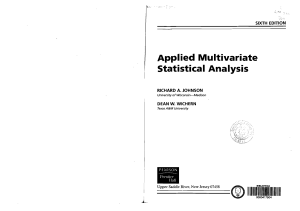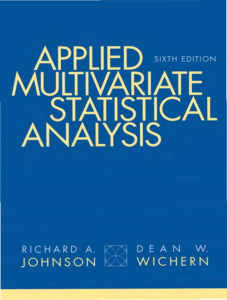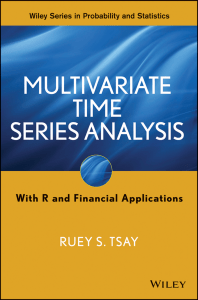LOYOLA COLLEGE (AUTONOMOUS), CHENNAI – 600 034
advertisement
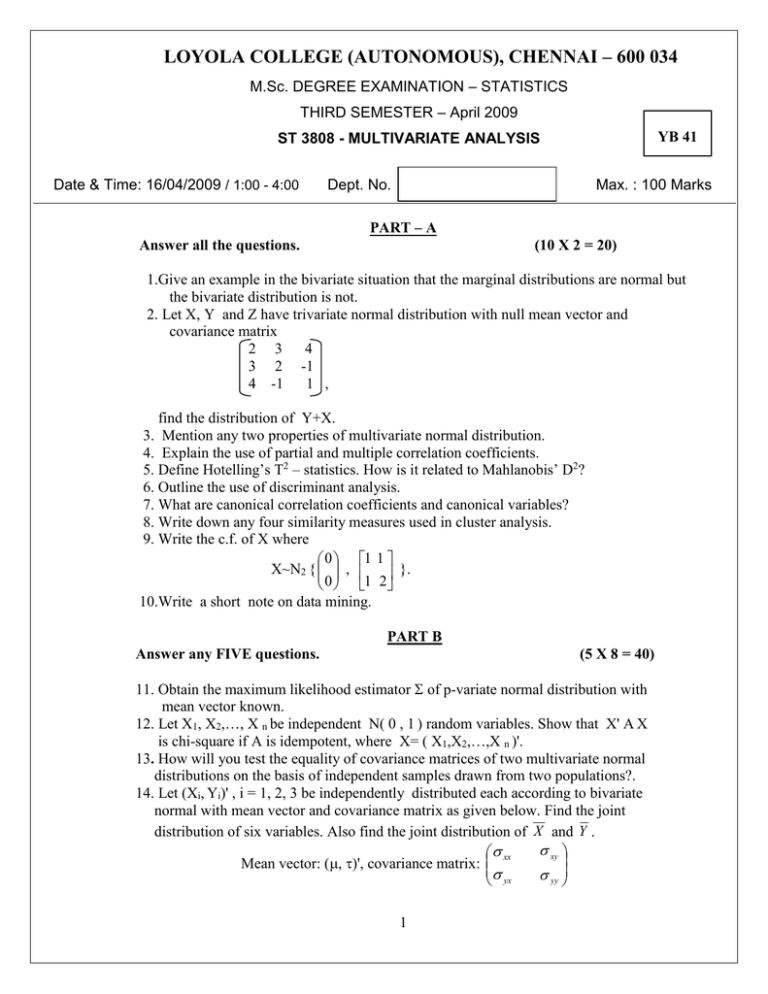
LOYOLA COLLEGE (AUTONOMOUS), CHENNAI – 600 034
M.Sc. DEGREE EXAMINATION – STATISTICS
THIRD SEMESTER – April 2009
YB 41
ST 3808 - MULTIVARIATE ANALYSIS
Date & Time: 16/04/2009 / 1:00 - 4:00
Dept. No.
Max. : 100 Marks
PART – A
Answer all the questions.
(10 X 2 = 20)
1.Give an example in the bivariate situation that the marginal distributions are normal but
the bivariate distribution is not.
2. Let X, Y and Z have trivariate normal distribution with null mean vector and
covariance matrix
2 3
4
3 2 -1
4 -1
1 ,
find the distribution of Y+X.
3. Mention any two properties of multivariate normal distribution.
4. Explain the use of partial and multiple correlation coefficients.
5. Define Hotelling’s T2 – statistics. How is it related to Mahlanobis’ D2?
6. Outline the use of discriminant analysis.
7. What are canonical correlation coefficients and canonical variables?
8. Write down any four similarity measures used in cluster analysis.
9. Write the c.f. of X where
0 1 1
X~N2 { , }.
0 1 2
10.Write a short note on data mining.
PART B
Answer any FIVE questions.
(5 X 8 = 40)
11. Obtain the maximum likelihood estimator of p-variate normal distribution with
mean vector known.
12. Let X1, X2,…, X n be independent N( 0 , 1 ) random variables. Show that X' A X
is chi-square if A is idempotent, where X= ( X1,X2,…,X n )'.
13. How will you test the equality of covariance matrices of two multivariate normal
distributions on the basis of independent samples drawn from two populations?.
14. Let (Xi, Yi)' , i = 1, 2, 3 be independently distributed each according to bivariate
normal with mean vector and covariance matrix as given below. Find the joint
distribution of six variables. Also find the joint distribution of X and Y .
xy
xx
Mean vector: (,)', covariance matrix:
yy
yx
1
15. Outline single linkage and complete linkage clustering procedures with an
example.
16. Giving suitable examples explain how factor scores are used in data analysis.
17. Consider a multivariate normal distribution of X with
8
2
=
0
3
,
=
7
5
1
4
5
4
8
6
1
8
3
7
4
6
.
7
2
Find i ) the conditional distribution of ( X1, X3 ) / ( X2, X4 )
ii) 33.42
18. a) Define i ) Common factor ii) Communality iii) Total variation
b)Explain classification problem into two classes and testing problem.
PART C
Answer any two questions.
(2 X 20 = 40)
19. a) Derive the distribution function of the generalized T2 – statistic.
b) Test at level 0.05 ,whether µ = ( 0 0 )' in a bivariate normal population with
σ11 = σ22= 10 and σ12= -4 , by using the sample mean vector x = (7 -3)' based
on a sample size 20.
(15 + 5)
20. a) What are principal components?. Outline the procedure to extract principal
components from a given covariance matrix.
b) Define partial correlation between Xi and Xj .Also prove that
______ ______
12.3= ( 12-1323)/ {(1-223) (1-213)} .
( 12+8)
21.a) Consider the two data sets
3
X1= 2
4
7
4
7
and X2 =
6
5
4
9
7
8
1 1
and S pooled
.
1 2
1) Calculate the linear discriminant function.
2) Classify the observation x0'= ( 2 7 ) as population π1 or population π2 using
the decision rule with equal priors and equal costs.
b) Explain how the collinearity problem can be solved in the multiple regression.
( 14+6)
22.a) Explain the method of extracting canonical correlations and their variables
from a dispersion matrix.
b) Prove that under some assumptions (to be stated), variance and covariance can
be written as = LL' + in the factor analysis model. Also discuss the effect
of an orthogonal transformation.
(8 + 12)
for which
x1 (3 6) , x2 (5 8)
*******************
2
